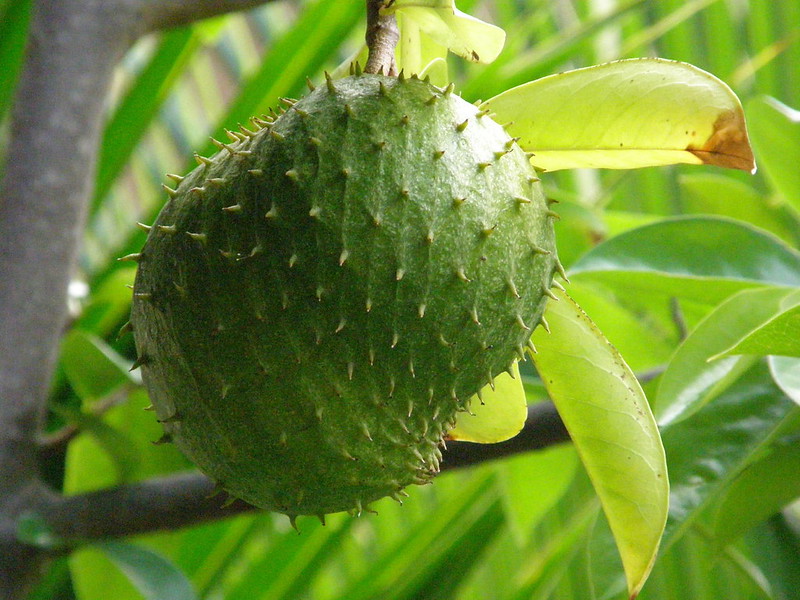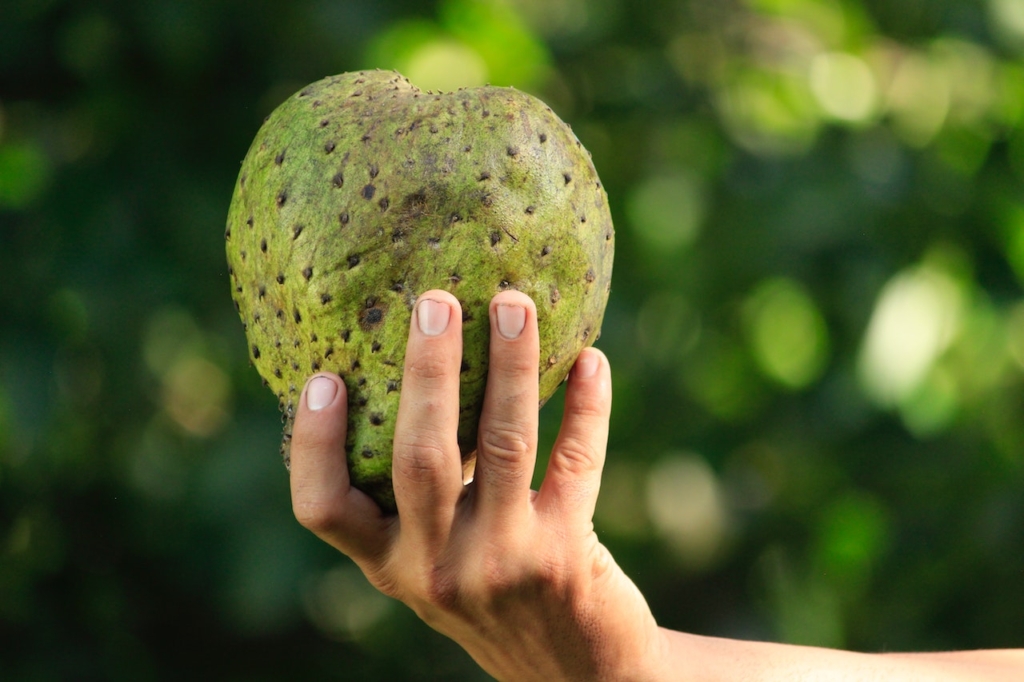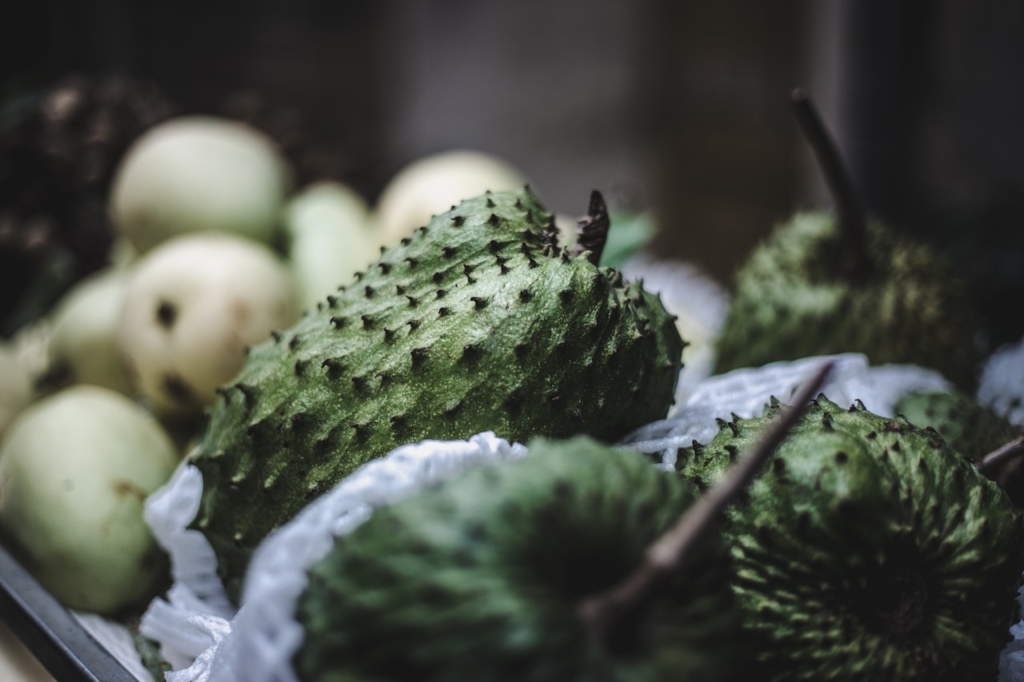Guanaba, also known as guanabana or Annona muricata, is a tropical fruit that is native to Central and South America. It is a green, spiky fruit with a white, creamy flesh that is often used in beverages, desserts, and other culinary applications. Guanaba is known for its unique flavor, which is often described as a combination of pineapple, banana, and strawberry.
The genus Annona, which includes guanaba, is a group of plants that are known for their edible fruits and medicinal properties. Guanaba, in particular, has been used for centuries in traditional medicine to treat a variety of ailments, including fever, diarrhea, and respiratory infections. Today, guanaba is still used in natural medicine and is often marketed as a dietary supplement for its potential health benefits.
Despite its popularity in certain parts of the world, guanaba is relatively unknown in other regions. However, it is slowly gaining recognition for its unique flavor and potential health benefits. In this article, we will explore the history and cultural significance of guanaba, as well as its nutritional profile and potential health benefits.
Guanaba Description
Taste and Flavor
Guanaba, also known as soursop, is a tropical fruit with a unique flavor profile. The fruit has a sweet and tangy taste that is often compared to a mix of pineapple and banana. The pulp of the fruit is creamy and soft, with a white flesh that is surrounded by a thick, spiky rind. The flavor of the fruit is enhanced by its sugar content, making it a popular ingredient in many tropical desserts and drinks.
Physical Characteristics
Guanaba is a broadleaf evergreen tree that is native to the tropical regions of the Americas. The tree can grow up to 30 feet tall and has large, dark green leaves that provide ample shade for the fruit. The fruit itself can weigh up to 15 pounds and is covered in a thick, spiky rind that is green when unripe and yellow-green when ripe. The fruit is harvested by hand when it is fully mature and ready to eat.
Guanaba is a flowering tree that blooms throughout the year, with the fruit appearing in cycles. The fruit is typically harvested in the summer months, but can be found year-round in some areas. The fruit is grown in many tropical regions around the world, including South America, the Caribbean, and Southeast Asia.
In summary, guanaba is a tropical fruit with a sweet and tangy flavor that is often compared to a mix of pineapple and banana. The fruit is grown in many tropical regions around the world and is harvested by hand when it is fully mature. The fruit’s physical characteristics include a thick, spiky rind and a creamy, white flesh.
Nutritional Value
Vitamins and Minerals
Guanabana is a fruit that is rich in vitamins and minerals, making it a nutritious addition to any diet. It contains high levels of vitamin C, which is essential for maintaining a healthy immune system and promoting the growth and repair of tissues in the body. In addition, guanabana is a good source of vitamin B6, which helps to regulate mood and prevent depression.
Minerals are also abundant in guanabana. It is particularly high in potassium, which helps to regulate blood pressure and maintain a healthy heart. Guanabana also contains magnesium, which is important for maintaining healthy bones and muscles, and iron, which is essential for the production of red blood cells.
Phytochemicals
Guanabana is also rich in phytochemicals, which are plant-based compounds that have been shown to have numerous health benefits. One of the most well-known phytochemicals in guanabana is acetogenins, which have been shown to have anti-cancer properties. In addition, guanabana contains alkaloids, which have been shown to have sedative and anticonvulsant properties.
Antioxidants are also abundant in guanabana. These compounds help to protect the body from damage caused by free radicals, which are unstable molecules that can cause cellular damage and contribute to the development of chronic diseases such as cancer and heart disease. Guanabana contains several antioxidants, including vitamin C and flavonoids.
Overall, guanabana is a highly nutritious fruit that is packed with vitamins, minerals, and phytochemicals. Incorporating guanabana into a balanced diet can provide numerous health benefits and help to promote overall wellness.
Health Benefits
Guanaba, also known as soursop, graviola, or annona, is a tropical fruit that has been used for centuries as a natural remedy due to its various medicinal properties. In recent years, scientific research has confirmed many of the health benefits of guanaba, making it a popular therapeutic option.
Cancer Prevention
One of the most significant health benefits of guanaba is its potential to prevent cancer. Studies have shown that guanaba contains compounds that can kill cancerous cells and prevent the growth of tumors. It is particularly effective against breast, colon, and prostate cancer. However, it should not be used as an alternative cancer treatment without consulting a doctor.
Diabetes and Heart Health
Guanaba can also help regulate insulin levels and blood glucose, making it beneficial for people with diabetes. Additionally, it has been shown to reduce the risk of heart attack and lower blood pressure, making it a heart-healthy option.
Anti-Inflammatory and Antimicrobial Properties
Guanaba has anti-inflammatory and antioxidant properties that can help reduce stress, neurotoxicity, and inflammation. It also has antimicrobial properties that can help with wound healing and fighting off infections.
In conclusion, guanaba has numerous health benefits that make it a valuable addition to any diet. However, it should not be consumed in large quantities as it contains toxic compounds that can be harmful to the body.
Culinary Uses
Popular Recipes
Guanabana, also known as soursop, is a popular fruit in the Caribbean and many other tropical regions. Its rich flavor and creamy texture make it a versatile ingredient in many recipes. Some of the most popular recipes that use guanabana include smoothies, juices, and teas.
One popular recipe is the guanabana smoothie, which combines guanabana extract with strawberries, sugar, and ice. Another popular recipe is guanabana juice, which is made by blending the fruit with water and sugar. Guanabana tea is also a popular beverage, and it is often served hot or cold.
Preparation and Consumption
When preparing guanabana, it is important to remove the seeds and skin before consuming it. The fruit can be cut in half and the flesh scooped out with a spoon. The flesh can then be mashed or blended to create a smooth puree.
Guanabana extract is also a popular ingredient in many recipes. It can be found in many health food stores and online retailers. Guanabana extract is often used as a natural sweetener in baked goods and other recipes.
Overall, guanabana is a versatile and delicious fruit that can be enjoyed in many different ways. Whether you prefer it in a smoothie, juice, or tea, guanabana is sure to be a hit with anyone who loves tropical flavors.
Cultivation
Climate and Soil Requirements
Guanabana, also known as soursop, is a tropical fruit that thrives in warm and humid climates. It requires a minimum temperature of 16°C and a maximum temperature of 38°C. The ideal temperature range for guanabana cultivation is between 24°C and 30°C. High humidity is also necessary for the fruit to grow properly.
Guanabana can be grown in a variety of soils, but it prefers well-drained soils that are rich in organic matter. The pH of the soil should be between 5.5 and 6.5. The plant is sensitive to salt and cannot tolerate waterlogged soils.
Geographical Distribution
Guanabana is native to tropical regions of Central and South America, including Colombia, Guatemala, Mexico, and Trinidad. It is also found in India and the Pacific Islands. The fruit is now widely cultivated in many subtropical and tropical regions of the world, including parts of Africa, Asia, and Australia.
In the Americas, guanabana is often confused with the sugar apple and cherimoya, which are closely related fruits. However, guanabana is larger and has a spiky green outer skin. The fruit is harvested when it is fully mature, which is indicated by a slightly soft texture and a yellow-green color.
References
- Morton, J. F. (1987). Fruits of warm climates. Miami, FL: J.F. Morton.
- Paull, R. E., & Duarte, O. (2011). Tropical fruits. Wallingford, UK: CABI.


